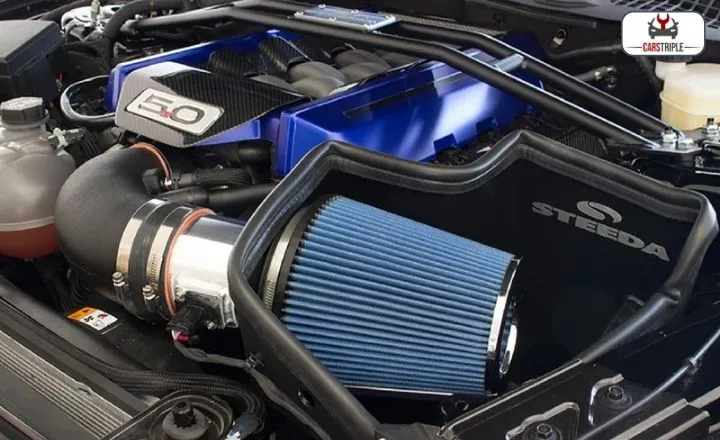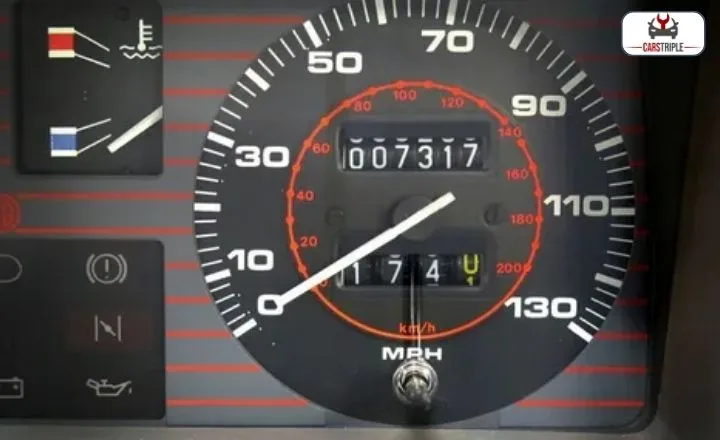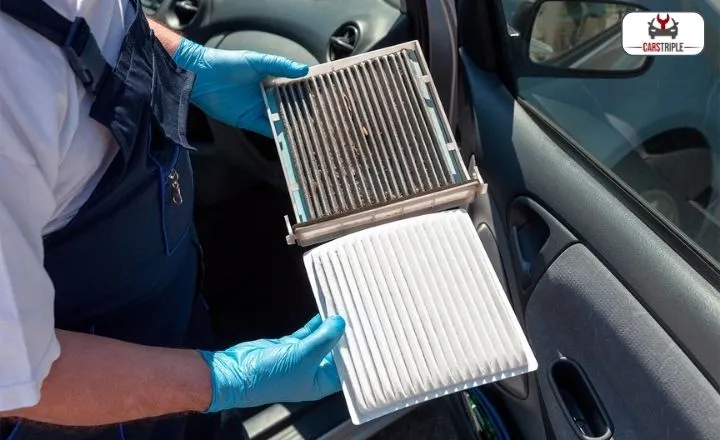When boosting the performance of your vehicle’s engine, one modification that often comes up is How Much HP Does A Cold Air Intake Add. This aftermarket accessory has gained popularity among car enthusiasts due to its potential to increase horsepower and enhance overall engine efficiency.
In this article, we will delve into the horsepower of a cold air intake and explore the various factors that influence the power gains achieved through a complex air intake installation.
How Much HP Does a Cold Air Intake Add?
There is no one-size-fits-all answer, as the additional power gained varies depending on various factors. It is generally accepted that a well-designed and adequately installed cold air intake can add around 5–15 hp to a car’s output. A cold air intake can increase horsepower primarily because it provides cooler and denser air to the engine.
An engine receiving colder air allows for more efficient combustion, increasing power output. Most auxiliary minibuses now have this impressive modification that significantly improves airflow.
By replacing the stock air intake system with a cold air intake, you can expect to increase horsepower and overall engine performance. It typically features a larger diameter and smoother airflow path than the stock intake system, reducing restrictions and improving performance.

Pros of a Cold Air Intake
Increased Horsepower
A significant advantage of installing a cold air intake is the considerable increase in horsepower. By drawing in cooler and denser air from outside the engine bay, compared to the hot air generated by the stock intake, a cold air intake allows for more efficient combustion. This leads to improved engine efficiency and power output.
The increased horsepower a cold air intake provides can have several practical benefits for car enthusiasts and drivers alike. It enhances acceleration capabilities, allowing for quicker throttle response and reduced 0-60 mph times.
This can significantly improve the driving experience, especially during overtaking maneuvers or merging onto highways where fast acceleration is crucial.
Improved Acceleration
Replacing the factory intake system with a cold air intake can significantly enhance your vehicle’s performance. The primary reason behind this improved acceleration is the increased flow of cool and dense air into the engine.
Unlike stock intakes that pull in hot air from the engine bay, cold air intakes are designed to draw in cooler outside air from locations such as the fender or bumper.
When an engine receives a higher volume of colder and denser air, it can produce more power during combustion. This results in better fuel combustion efficiency and ultimately leads to enhanced acceleration.
The cool air also helps prevent detonation or pinging by reducing cylinder temperatures, enabling your vehicle to run more smoothly at higher speeds without adversely affecting performance.
Better Mileage
Installing a cold air intake has the potential for better mileage on a car. It helps to optimize combustion, resulting in improved fuel efficiency.

The cooler intake temperature achieved through a cold air intake allows for more efficient fuel burning. When cooler and denser air enters the combustion chamber, it leads to a more complete burn of fuel particles.
This means less fuel is wasted during combustion, improving gas mileage. With better combustion due to the increased oxygen supply provided by colder air, engines can operate at their peak performance levels without using excessive fuel.
Improved Filters
One significant advantage of this upgrade is the improved filters that come with it. Cold air intakes have high-quality filters to trap dirt, debris, and other particles from entering your engine. These filters are typically larger and have a higher filtration capacity than stock air filters.
By having a better filtration system, you can ensure that only clean and filtered air reaches your engine, resulting in improved combustion.
This means that harmful contaminants such as dust or pollen are prevented from causing damage to vital components like pistons or cylinders. Since the cold air intake filter has an increased surface area, it can capture more contaminants without getting clogged quickly.
Superior Sound
A cold air intake can significantly enhance the engine’s auditory experience by amplifying the sound of incoming airflow. By replacing the restrictive factory airbox and filter with a larger and more open design, a cold air intake allows for increased airflow into the engine.
This increased airflow results in a deeper and throatier sound as the engine draws in more oxygen. Whether the car revives at a red light or accelerates on an open road, you’ll be greeted with an exhilarating roar.
Cons of a Cold Air Intake
Need Filter Discernment
One crucial aspect that often gets overlooked is the need for filter discernment. While cold air intakes are designed to draw in cooler air from outside the engine bay, they are not impervious to debris and contaminants.
Without proper filter discernment, you risk allowing harmful particles into your engine, which can cause damage over time. Choosing an intake system with high-quality filters that effectively trap dirt and dust while still allowing sufficient airflow is essential.

Cost
One key disadvantage that should be considered before investing in this upgrade is the cost. Installing a cold air intake can be expensive, especially if you opt for high-quality components or professional installation services.
Purchasing it can set you back several hundred dollars. While more affordable options are available, it’s essential to remember that cheaper kits may compromise quality and longevity.
Hiring a professional mechanic will add an extra expense if you need more experience working with cars or need more time or tools for installation. Their expertise ensures the job is done correctly, but it also increases the overall cost of installing a cold air intake system.
Difficult Installation
The installation process can be challenging and time-consuming, making it one of the significant drawbacks of this performance modification. Unlike other upgrades that can be easily installed with essential hand tools, a cold air intake often requires more complex procedures.
This involves removing various components from the engine bay to make room for the more extensive aftermarket intake system. Specific car models may have limited space under the hood, making fitting correctly in the cold air intake even more challenging.
The main difficulties during installation include electrical connections and sensors attached to the stock intake system. These sensors monitor essential parameters like airflow and temperature, providing crucial data to the engine control unit (ECU).
When installing an aftermarket cold air intake, these sensors must either be removed from their original location or carefully transferred onto the new system.
Steps in Installing Cold Air Inlet
A cold air intake system brings cooler air into the engine, which can result in increased horsepower and better fuel economy. If you’re ready to take on this project, here are some simple steps to guide you through the installation process.
Step-By-Step Guide
- Take off the cover of the air filter box and remove the filter.
- Disconnect the power cable of the MAF sensor.
- Begin by detaching the clip and consider obtaining a pair of pliers for this technique. Ensure the air filter hose remains connected to the remainder of the intake.
- Take off the filter housing by unscrewing it.
- It is advisable to detach the MAF sensor from the filter housing and indicate the correct orientation in which it should be positioned.
- Insert the air intake tubing into the engine compartment and assess its compatibility. Refer to the instructions to identify which components of the previous intake need to be removed.
- Ensure that the new pipe and the MAF sensor are correctly oriented when installing them.
- You connected the power plug to the MAF sensor.
- To finalize the setup, you arrange the air filter.
Conclusion
As we discussed in above article about, How Much HP Does A Cold Air Intake Add ? So, we concluded that the exact amount of horsepower gain will vary depending on several factors, such as the make and model of the car, the quality of the cold air intake system, and other modifications made to the engine.
While some sources claim that a cold air intake can add anywhere from 5 to 20 horsepower,. It is essential to approach these numbers skeptically and consider them as potential benefits rather than guaranteed results.
Suppose you are looking to maximize your vehicle’s performance and increase horsepower. Before investing in a cold air intake system, consulting with a professional or doing thorough research is recommended.
FAQ’s
Which cold air intake adds the most HP?
Some well-known brands often praised for their performance gains include K&N, AEM, and Injen. These brands have been tested and have shown consistent improvements in horsepower across various vehicles.
Do all vehicles benefit from a cold air intake?
Most vehicles can benefit from a cold air intake, but the extent of improvement may vary depending on factors like engine design, existing airflow restrictions, driving conditions, and overall vehicle tuning.
